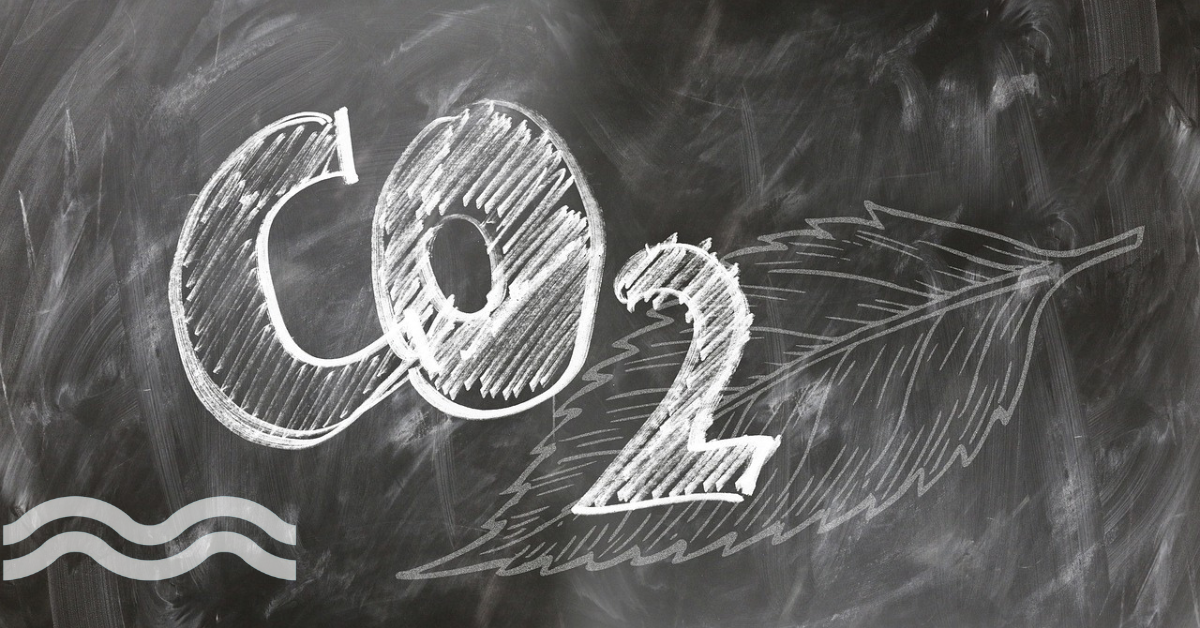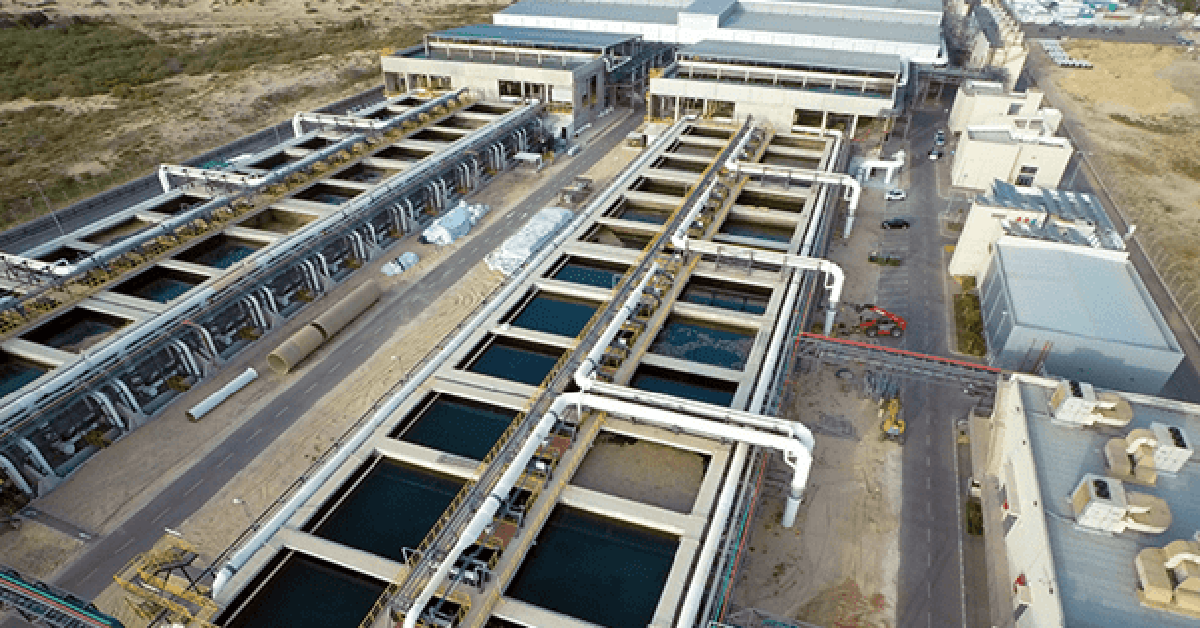Atomic powered, decentralised desalination: a moonshot?
According to the World Nuclear Association, nuclear energy is already being used for desalination, yet has the potential for much greater use. Following his fusion energy moonshot at the IDA World Congress in Sydney, Prof. Lienhard shares the same views. Are modular, decentralised nuclear powered desalination plants the future for water?
Tackling water scarcity
As our global population continues to grow and our planet becomes increasingly warmer, water scarcity is becoming a real threat to millions of people around the world. By 2025, half of the world's population will be living in water-stressed areas, according to the United Nations.
The world is in desperate need of a solution to this issue. One water supply solution is desalination and after decades of slow progress, desalination is increasingly being used to provide drinking water around the globe. There is now over 22,000 desalination plants globally, with over 100 million m3/day in total contracted capacity, according to the International Desalination Association (IDA).
Despite continued innovation to bring down the energy consumption of desalination processes, historically higher than alternative water sources, questions remain over. Could nuclear power by one answer?
Prof. John H. Lienhard V, Abdul Latif Jameel Professor and the founding director of the Abdul Latif Jameel Water and Food Systems Lab at MIT (J-WAFS) presented a moonshot during the IDA World Congress 2022 in Sydney to create modular, decentralised nuclear powered desalination plants for the future of water.
“Nuclear power is a promising solution to the current climate crisis as it produces energy without releasing carbon into the atmosphere. It also has the potential to produce water without emitting carbon, which is a crucial goal,” he says.
What is nuclear desalination?
Nuclear desalination involves the use of nuclear reactors to provide the energy needed to desalinate seawater. The process works by using the energy from a nuclear reactor to produce electricity, which is then used to power the desalination plant. By using nuclear power, desalination plants can produce freshwater in large quantities, making it a reliable and sustainable solution for regions facing water scarcity.
One of the primary benefits of nuclear desalination is that it can be much more energy-efficient than traditional desalination methods. While traditional desalination methods typically rely on fossil fuels, nuclear desalination does not produce any greenhouse gases. Additionally, nuclear power plants have a high capacity factor, meaning that they can continually produce energy, making it a reliable source of power for desalination plants.
Another advantage of nuclear desalination is the ability to produce freshwater at a much lower cost than traditional desalination methods. While the initial capital costs of constructing a nuclear power plant are high, the long-term operating costs are much lower than those of other desalination methods. This is because nuclear power plants have a lifespan of up to 60 years and require minimal maintenance compared to other power plants.
With advances in technology, nuclear desalination is becoming more efficient and safe. Modern nuclear power plants have numerous safety features, including automatic shutdown systems, multiple backup generators, and containment buildings, which make them much safer than older nuclear reactors. Additionally, nuclear waste can be recycled and reused in nuclear reactors.
What about fusion energy?
Prof Lienhard says that new technologies like fusion energy could revolutionise energy and water production and could be the ultimate answer to sustainable desalination of the future. Using a fusion power reactor for water desalination could have many advantages. For example, fusion power plants may be located in densely populated areas and can be used in regions where fission energy is non-desirable.
“Fusion energy merges hydrogen isotopes to form helium, releasing enormous amounts of energy without producing radioactive waste,” says Prof Lienhard.
“This technology faces challenges, but recent developments in high-temperature superconductors have made stabilising plasma possible. As a result, projections suggest fusion electricity could be produced by the early 2030s.
“I am really optimistic that fusion technology could potentially provide clean energy and water without waste products, making it an exciting development.”
SMR and desalination
Speaking to Aquatech Online, Leon Awerbuch, president and CEO of the International Desalination Consulting Associates LLC says that while fusion energy desalination remains exciting, he believes it will take a much longer time to bring to reality. Instead, he believes that Small Modular Reactors (SMR) used for desalination could be much closer to being a reality than fusion power.
SMRs are smaller than conventional nuclear power reactors, and produce about a third as much electricity, using nuclear fission to generate heat. SMRs can be built using prefabricated units, making them more affordable and quicker to construct than traditional nuclear power plants.
SMRs can be sited in areas not suitable for larger nuclear plants, so they can be used in rural areas to provide low-carbon electricity. Microreactors are a subset of SMRs and are designed to generate smaller amounts of electricity, making them even more suitable for areas without reliable energy sources. They can also be used as backup power supplies in emergencies, or to replace generators that are fueled by diesel.
“If fusion can be deployed on a large scale, it would offer an energy source devoid of the pollution and greenhouse gases caused by the burning of fossil fuels and the dangerous long-lived radioactive waste created by current nuclear power plants, which use the splitting of uranium to produce energy. But it will take quite a while before fusion becomes available on a widespread, practical scale, if ever,” he says.
“Fusion power offers the prospect of an almost inexhaustible source of energy for future generations, but it also presents so far unresolved engineering challenges. The fundamental challenge is to achieve a rate of heat emitted by a fusion plasma that exceeds the rate of energy injected into the plasma.
“My bet is that SMR using the well-established desalination methods of Hybrid SWRO, and MED technology will soon see practical demonstration and applications of nuclear desalination,” he concludes.
Challenges of using nuclear energy to power desalination
Nuclear desalination has proven to be a viable solution in countries like Kazakhstan, India, and Japan. While concerns have been raised about the environmental effects of nuclear power, the technology is becoming safer and more efficient.
In terms of cost, nuclear desalination is comparable to fossil fuel plants, with indicative costs ranging from 70-90 US cents per cubic metre. One promising strategy is to use power reactors to meet high grid load demands, while using excess electricity to power pumps for reverse osmosis (RO) desalination.
A successful example of this approach is the BN-350 fast reactor in Kazakhstan, which produced up to 135 MWe of electric power while producing 80,000 m3/day of potable water. The cogeneration plant was designed for 1000 MWt, but operated up to 750 MWt.
Meanwhile, Japan has 10 desalination facilities that yield some 14,000 m3/day of potable water linked to pressurised water reactors used for electricity production. South Korea also has MED plants associated with PWRs. India has been engaged in desalination research since the 1970s, and in 2002, a hybrid Nuclear Desalination Demonstration Project was set up at the Madras Atomic Power Station, Kalpakkam. The project includes a 1800 m3/day capacity RO unit, a 4500 m3/day MSF plant, and a barge-mounted RO unit. The largest nuclear desalination plant using hybrid MSF-RO technology, it also incurs a 4 MWe loss in power from the plant.
While economic factors will largely determine the large-scale deployment of nuclear desalination on a commercial basis, advances in technology and safety features of modern nuclear power plants offer promising prospects for efficient and sustainable desalination. Additionally, nuclear waste can be recycled and reused in reactors, further enhancing the sustainability of this approach.
We promise never to send you spam and you can unsubscribe at any time!





